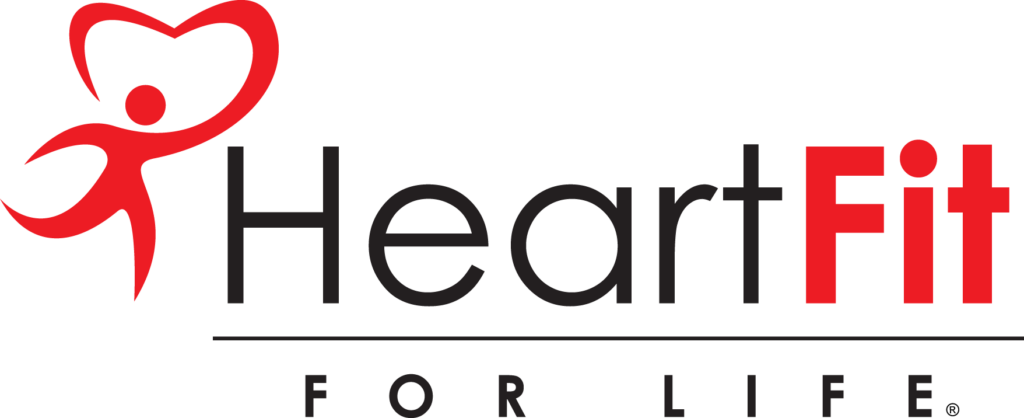Benefits of Exercise
Your heart is a muscle. Just like a bicep, the more you work your heart, the stronger it gets.
It is widely accepted that regular physical activity is beneficial for cardiovascular health. Frequent exercise is associated with a decrease in cardiovascular mortality as well as the risk of developing cardiovascular disease. Regular exercise and physical activity are associated with remarkable widespread health benefits and a significantly lower cardiovascular disease risk.
“If exercise could be packaged in a pill, it would be the single most widely prescribed and beneficial medicine in the nation.”
–Robert Butler, National Institute on Aging
What are the health benefits of exercise?
Understanding how physical activity benefits your heart can be a strong motivation to get moving.
It’s never too late to start exercising. HeartFit For Life can help you get the recommended amount of exercise. You will feel better, help prevent or control many diseases, and likely even live longer.
Going strong: Exercise program looks to help members with heart conditions reverse their symptoms
by Chris Kenrick / Palo Alto Weekly
Learn More
Lower Risk of Cardiovascular Disease
Exercise improves the capacity of the blood vessels to dilate in response to exercise or hormones, consistent with better vascular wall function and an improved ability to provide oxygen to the muscles during exercise and lowering blood pressure. This in turn helps to reduce risk factors associated with heart disease and stroke.
Raise HDL, the “Good Cholesterol”
Being active stimulates high-density lipoprotein (HDL) or the “good cholesterol” which facilitates the uptake of cholesterol from the bloodstream and keeps blood vessels healthier. Exercise can also help you lower unhealthy triglyceride levels.
Increase Cardiac Output
Regular cardiorespiratory exercise improves the heart’s ability to deliver blood and oxygen to the body. Exercise makes the heart stronger and contract more forcefully delivering more blood and oxygen to the body with each contraction.
Improve Heart Vascularization
Regular cardiorespiratory exercise improves blood flow to the coronary arteries, which improve blood flow and oxygen to the heart. Regular exercise also dilates the chambers of the heart, allowing for greater delivery of blood and oxygen to the body.
Increase Maximal Oxygen Uptake (VO2 max)
Regular cardiorespiratory activity improves various physiological functions such as the ability to form new capillary structures for improved blood flow and greater uptake of oxygen by the working muscles. This allows your body to adapt and use a larger concentration of oxygen during your workouts.
Improve Blood Sugar Control
Even moderate exercise like walking makes you breathe a little harder and makes your heart beat a little faster. Your muscles use more glucose, the sugar in your bloodstream. Over time, this can lower your blood sugar levels and make the insulin in your body work better. You’ll get these benefits for hours after your workout.
Boost Metabolism
Regular physical activity boosts your metabolism by allowing you to burn more calories during and after your workouts. Burning calories is important for long term weight management. An increased metabolism can reduce risk factors that contribute to obesity.
Improve Endurance
Regular physical activity strengthens your heart and muscles so they can do more work. Improved endurance in these areas can improve your body’s ability to perform activities of daily living.
Burn Body Fat
Regular physical activity allows your body to tap into its fat stores and use them as fuel. This can result in a decrease in weight over time.
Increase Muscle Mass
As we age, we experience a steady decline in both muscle size and strength. Resistance training improves strength, activities of daily living and overall physical health and function. It also provides the supporting structures of the muscles such as the tendons and ligaments with more tensile strength which improves movement and function.
Counteract Osteoporosis
With age our bone health deteriorates. Regular weight bearing activity such as walking or muscle strengthening can improve your bone health by countering osteoporosis.
Raise Endorphins
Endorphins are “feel good” chemicals in the brain that get released with physical activity. Releasing endorphins improves mood, can relieve feelings of depression and increase one’s cognitive performance.
Reduce Risk of Falls
Falls among older adults can be prevented with a program of exercises specifically geared toward improving balance and posture. Kinesthetic awareness, or the ability to know where your body parts are in space, is required for every movement we make. So it’s not surprising that balance can be learned, challenged, and improved.
Provide Stress Relief
Exercise reduces levels of the body’s stress hormones, such as adrenaline and cortisol, and stimulates the production of endorphins.Even a simple 20-minute stroll can clear the mind and reduce stress.
Reduce Anxiety and Depression
A study done by the Harvard T.H. Chan School of Public Health found that running for 15 minutes a day or walking for an hour reduces the risk of major depression by 26%. Exercise helps reduce long-term feelings of depression and anxiety.
Boost Self-esteem
Exercising improves the way you see yourself. Regular exercise helps build confidence by improving our body image. You feel stronger, healthier, and your energy levels are higher.
Increase Brain Function
Studies show that people who are physically active are less likely to experience a decline in their mental function and have a lowered risk of developing dementia. Physical exercise prevents cognitive decline.
Promote a Better Sleep
Regular cardiovascular exercise helps you fall asleep faster, spend more time in deep sleep, and awaken less during the night. In fact, exercise is the only known way for healthy adults to boost the amount of deep sleep they get — and deep sleep is essential for your body to renew and repair itself.
Help Addiction Recovery
Exercising during recovery reintroduces healthy endorphins back into the body. Experts are increasingly suggesting that regular exercise can alleviate withdrawal symptoms. Through movement, the mind refocuses on the physical body and gets distracted from cravings.
Better Quality of Life
Exercise not only helps you live longer — it helps you live better. After an exercise session you are more energized and feel more motivated throughout the day. In addition to making your heart and muscles stronger, it can also improve your mental and emotional functioning and even bolster your productivity and close relationships.


